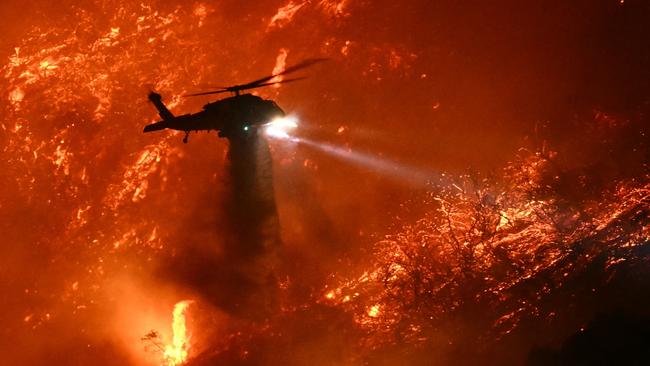LA bushfires might increase your insurance premiums as extreme weather increases risk
Australians are likely to be hit with steep premium hikes in the wake of the LA bushfires, with insurance companies struggling to maintain profit margins amid extreme weather events.

Australian insurance policyholders are likely to be hit with steep premium hikes in the wake of the Los Angeles bushfires, with insurance companies struggling to maintain profit margins amid increasingly frequent extreme weather events.
Current reinsurance cost rises are already trickling down to Australian policyholders as upward pressure on insurance premiums are triggered by a 30 per cent increase to reinsurance costs faced by the industry just last year.
“Extreme weather events are worsening, driven by changing climate, intensifying floods and fires, and lengthening fire seasons,” Insurance Council of Australia general manager of climate Alix Pearce said.
Over the past 30 years the average insured losses from bushfires in Australia were $220m per year, but losses have multiplied to more than $560m in the past five years, according to the ICA’s 2023-24 Catastrophe Resilience report.
The severity of the LA fires in the northern hemisphere winter are a reminder that extreme weather events are worsening as bushfire seasons lengthen, with implications for the affordability and availability of insurance.
“Wherever you live in Australia there is upward pressure being put on insurance premiums driven by worsening extreme weather, inflationary pressures, global reinsurance prices and supply chain shortages,” Ms Pearce told The Australian.
“While it’s too early to predict whether there will be cost implications for local insurance markets, the LA fires have occurred in the context of a global reinsurance industry that has already been stressed by increasing extreme weather and inflation.”
This is putting pressure on insurance pricing, compounded by rising risks leading to billions of dollars in losses over the past decade throughout the insurance industry, forcing many major insurers globally to pause or scale back their home insurance.
Global reinsurer Swiss Re estimates the protection gap in this country for natural catastrophe losses over the decade 2014-23 at $19.5bn, or one-third of the estimated $60.3bn cost of natural catastrophe loss over that period.
This gap will only worsen as extreme weather events spur insurance demand, reducing the Australian insurance industry to a cocktail of high pricing, lack of availability and increased risk.
Allianz chief corporate affairs officer Nicholas Schofield said his company had seen a “marked increase” in the number of home insurance quotes sought in the second week of January 2025 compared to the same period in 2024, but added it is “too early to tell” if the increase is related to the LA bushfires.
Mr Schofield confirmed that insurance costs are set to increase and said “increasing extreme weather events in Australia will contribute to above-average premium increases in the future, particularly for properties vulnerable to flood, bushfire and cyclone”.
He also called for “state and local governments to cease approving new property developments in areas vulnerable to extreme natural perils”.
As Australia’s population continues to grow in areas with greater exposure to storms, floods, bushfires and cyclones, Ms Pearce said policies needed to be implemented to mitigate risk.
“Consistent resilience investment is crucial, along with addressing the underlying driver of worsening extreme weather – climate change,” she said.
Insurance giant Suncorp told The Australian: “As the LA fire event is still unfolding, the full financial cost is unknown, and we are yet to see the impact this will have on the global reinsurance market.
“Suncorp has long advocated for measures to mitigate against the impact of extreme weather, particularly for customers in areas at risk of bushfire, flood and cyclone. This includes greater investment in public infrastructure, support for homeowners to make their homes more resilient, and improvements in where and how we build in high-risk locations.”






To join the conversation, please log in. Don't have an account? Register
Join the conversation, you are commenting as Logout